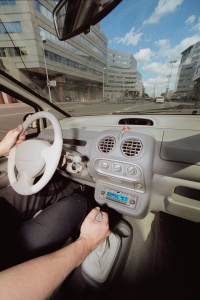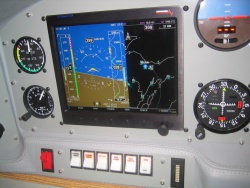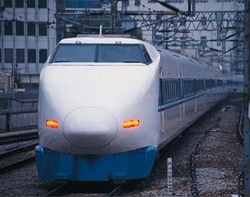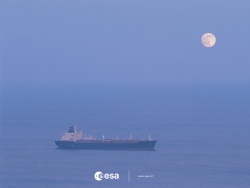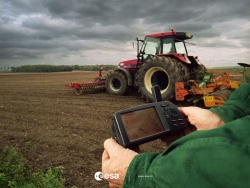If you wish to contribute or participate in the discussions about articles you are invited to contact the Editor
Civil Applications
| Applications | |
|---|---|
| Title | Civil Applications |
| Author(s) | GMV |
| Level | Basic |
| Year of Publication | 2011 |
The initial purpose of the first GNSS systems (GPS and GLONASS) was military but very early in the experimental phase of GPS the incident with the Korean Air Lines Flight 007 lead the US Government to issue a directive making GPS freely available for civilian purposes[1].
Currently the use of GNSS systems in Civil Applications is generalized and every GNSS system in operation or in construction takes civil applications as one of the most important uses of GNSS systems.
Personal Applications
The availability of low-cost GNSS chipsets allowed for integration of GNSS in different consumer products such as mobile phones. As a consequence, GNSS started being used not only for professional activities but also for leisure and entertainment purposes.
Personal GNSS Applications can bring comfort to the user and save him time or used just to facilitate social interactions not bringing a tangible benefit to the user. The fact that the technology is available and free to use, allows for this kind of use.
Different types of personal applications are:
- Pedestrian Navigation
- Outdoor Navigation
- Social Networking
- Photography Geocoding
- Location Based Services
Detailed information about Personal Applications can be found here.
Road Applications
The road sector is a major potential market for GNSS applications. Satellite navigation receivers are now commonly installed in new cars as a key tool for providing new services to people on the move: electronic charging, real-time traffic information, emergency calls, route guidance, fleet management and Advanced Driving Assistance Systems[2].
Satellite navigation will help regulate road use and minimize traffic jams. If all vehicles are fitted with a navigation satellite receiver and a data transmitter, their position can be relayed automatically every few seconds to a central station. This information can then be used in a number of ways to control road usage. It could, for example, be used to charge motorists for using a stretch of road, to restrict access to congested roads, or to inform drivers of congestion and suggest alternative, quieter routes[3].
Different types of road applications are:
Detailed information about Road Applications can be found here.
Aviation Applications
In the major transport domains, and notably in aeronautical applications, satellite navigation has long been an additional means of localization. The development of GPS has provided a supplementary positioning service for many flight phases, in leisure flying as well as commercial air transport[4].
In the future, GNSS is expected to assist pilots in all flight phases, from movement on the ground, to take-off, en-route flying, and landing in all weather conditions, reaching the level of safety that will be required to cope with the continuous increase in the number of flights[4].
Different types of aviation applications are:
Detailed information about Aviation Applications can be found here.
Rail Applications
The railway domain can considerably profit from the implementation of autonomous on-board positioning systems. Especially for local and regional railway lines, there are various possible applications which could enable a cost-effective modernization and increase of efficiency[5].
However, train control poses high demands on positioning with respect to availability, reliability and integrity. These requirements can only be fulfilled by means of integrated positioning systems which combine GNSS with other sensors[5].
The main rail application is Traffic Management and Signalling.
Detailed information about Rail Applications can be found here.
Maritime Applications
The sea and waterways are the most widely used mode for transporting goods worldwide. A wide variety of vessels moves around the world each day. Satellite navigation benefits all maritime applications, including leisure boats, commercial vessels, as well as unregulated and Safety of Life at Sea regulated ships[5].
Satellite navigation can be used in every phase of marine navigation: ocean, coastal, port approach and port maneuvers, under all weather conditions.
Different types of maritime applications are:
Detailed information about Maritime Applications can be found here.
Industry Applications
Industry uses heavy machinery for many purposes. Satellite navigation and GNSS augmentation techniques can guide these machines precisely to perform their work. The same technique can be used for automated guidance of machines working in dangerous areas or simply to save manpower in repetitive work[6].
The computer compares the GNSS position with the desired work profile and provides visual guidance to the operator for maneuvering the vehicles. The use of satellite-based machine guidance systems in surface mines is becoming common with very positive results in productivity and costs[6].
Different types of industry applications are:
Detailed information about Industry Applications can be found here.
Notes
References
- ^ Global Positioning System on Wikipedia
- ^ Galileo Application Sheet - Road Applications, ESA and European Commission, October 2002
- ^ ESA Portal - Navigation Applications - Road, ESA, June 2007
- ^ a b Galileo Application Sheet - Aviation, ESA and European Commission, October 2002
- ^ a b c ESA Portal - Navigation - Who benefits: some practical applications, ESA, October 2004
- ^ a b Galileo Application Sheet - Civil Engineering, ESA and European Commission, June 2002


